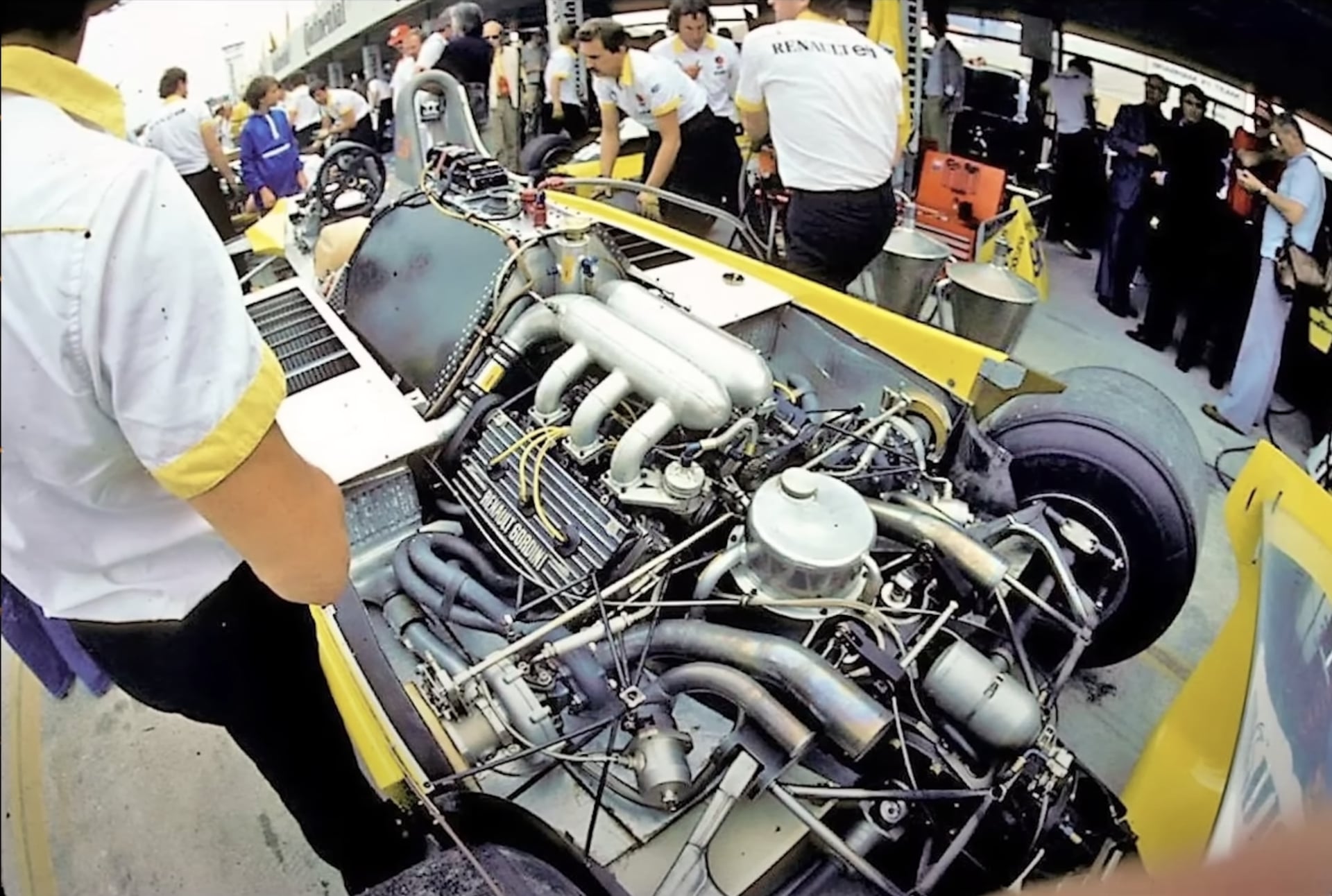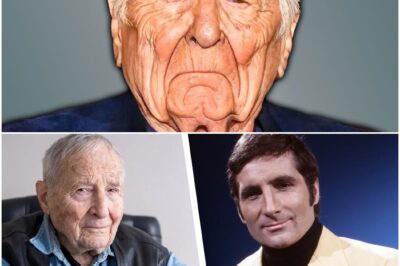In the grand and often tumultuous history of Formula 1, no period is remembered with such a mixture of awe, fear, and reverence as the “Turbo Era.” It was a time of glorious excess, a brief, fiery decade when engineering genius ran rampant, unconstrained by today’s regulations. This was an age of automotive monsters, where tiny 1.5-liter engines were coaxed into producing well over 1,000 horsepower, creating some of the most powerful and terrifying racing machines ever conceived. It was a period that redefined the limits of speed, tested the courage of drivers, and ultimately burned so brightly that it had to be extinguished for the sport’s own good.

The seeds of this revolution were sown in the late 1960s and early 1970s, a time dominated by the steady, reliable power of the naturally aspirated Ford Cosworth DFV engine. This V8 powerhouse was a marvel of its time—affordable, dependable, and potent enough to win championships. It became the standard, the engine of choice for nearly every team on the grid. This uniformity, however, bred a certain predictability. While the racing was close, true innovation in the engine department had stagnated. The regulations of the time permitted a choice: a 3.0-liter naturally aspirated engine or a 1.5-liter engine with a “compressor”—a supercharger or a turbocharger. For years, every team chose the former, believing the smaller, forced-induction engines to be too complex and unreliable.
Then came Renault. In 1977, the French automotive giant arrived on the scene with a radical proposition: the RS-01, powered by a 1.5-liter turbocharged V6. On paper, it was a brilliant concept. A turbocharger uses exhaust gases to spin a turbine, which in turn spins a compressor that forces more air into the engine, allowing it to burn more fuel and generate immense power. It promised a significant horsepower advantage over the Cosworths. In reality, its debut was anything but brilliant.
The Renault RS-01 was chronically, catastrophically unreliable. The primary issue was “turbo lag,” a delay between the driver pressing the throttle and the turbo spooling up to deliver power. This made the car incredibly difficult to handle, with power arriving in a sudden, violent surge. Worse, the intense heat and pressure generated by the turbo often led to spectacular engine failures. The car would frequently retire from races in a cloud of white smoke, earning it the unflattering but fitting nickname “the yellow teapot.” For two years, Renault was the laughingstock of the paddock, a symbol of overambitious and flawed technology.

But the French team persevered. They meticulously refined the technology, and in 1979, the breakthrough came. The introduction of the twin-turbo RS-10, combined with the era’s revolutionary “ground effect” aerodynamics, transformed the car. At the French Grand Prix, on home soil, Jean-Pierre Jabouille drove the Renault to its first-ever victory. The world of Formula 1 was put on notice. The teapot had finally boiled, and the turbo revolution had officially begun.
The implications of Renault’s success rippled through the paddock. Other giants of the sport, who had been content with their Cosworths, could no longer ignore the immense power potential of turbocharged engines. In 1981, the legendary Scuderia Ferrari, a team synonymous with engine excellence, introduced its own turbo V6. With their immense resources and engineering prowess, Ferrari quickly developed a motor that broke the 600-horsepower barrier, setting a new benchmark for performance.
By 1982, the technological arms race was in full swing. Brabham, under the ingenious design of Gordon Murray, partnered with BMW to create what would become the most powerful engine of the era. The BMW M12/13 engine was an inline-four-cylinder marvel, a tiny 1.5-liter block that, in its ultimate qualifying specification, was rumored to produce an astonishing 1,400 horsepower. This was a level of power utterly unprecedented in motorsport, a figure that remains mind-boggling even by modern standards. Drivers described the experience as “frightening,” with the raw acceleration pinning them to their seats with brutal force.

The mid-80s represented the absolute zenith of the Turbo Era. Teams like Lotus, Alfa Romeo, and Honda joined the fray, and the grid became a symphony of screaming turbos and glowing exhaust pipes. The power outputs were so extreme that teams developed special “qualifying engines.” These were essentially hand grenades, designed to last for only a handful of laps at maximum boost pressure, delivering peak power for that one perfect qualifying run before being discarded. The race engines were detuned slightly for reliability, but even they produced close to 1,000 horsepower.
This era of unbridled power produced some of the sport’s most iconic moments and dominant cars. In 1984, McLaren, equipped with aTAG-branded engine built by Porsche, created the near-perfect MP4/2. With the masterful driver pairing of Niki Lauda and Alain Prost, they obliterated the competition, winning 12 of the 16 races that season. Their success was not just about raw power; the Porsche engine was also remarkably fuel-efficient, a critical advantage in an era of strict fuel limits.
However, the sheer excess of the Turbo Era was beginning to cast a dark shadow. The cars had become almost too fast for the circuits, the drivers, and the tires of the time. Reliability was abysmal; the 1986 season saw an average finishing rate of just 40%. The costs were spiraling out of control, with teams needing massive budgets to develop and maintain these complex power units. Most importantly, the danger was palpable. The immense speeds and the sudden, unpredictable nature of engine failures raised serious safety concerns.

The governing body, the FIA, was forced to act. They began a gradual process of reining in the turbo monsters. First came fuel capacity limits, then restrictions on turbo boost pressure. In 1986, naturally aspirated engines were temporarily banned, forcing every team to run turbos, but this only intensified the power war. A year later, the FIA reintroduced naturally aspirated engines with a larger displacement, while simultaneously tightening the screws on the turbos.
The final year of the Turbo Era, 1988, was a fitting swansong. Despite severe restrictions, the McLaren-Honda combination proved to be one of the most dominant forces in F1 history. With Ayrton Senna and Alain Prost at the wheel, the McLaren MP4/4 won a staggering 15 of the 16 races, a testament to Honda’s engineering genius in extracting maximum performance within tightening constraints.
But the writing was on the wall. For the 1989 season, turbocharged engines were banned outright. The FIA cited safety, cost, and a desire to level the playing field as the primary reasons. The age of monsters was over.
Looking back, the Turbo Era remains a pinnacle of motorsport innovation. It was a time when engineers were unshackled, pushing the boundaries of what was thought possible with an internal combustion engine. It produced cars that were visually and sonically spectacular, and it demanded a level of bravery and skill from its drivers that is hard to comprehend today. While modern F1 hybrid power units are technological marvels of efficiency and complexity, they lack the raw, untamed brutality of their 1980s ancestors. The Turbo Era was a glorious, dangerous, and unforgettable chapter in Formula 1’s history—a time when the sport dared to unleash its monsters.
News
Johann, Katja und das Vermächtnis der Liebe: Die herzzerreißende Wahrheit hinter der Hofwoche, die den Witwer zu Tränen rührte
Die „Hofwoche“ bei „Bauer sucht Frau“ ist traditionell jene Zeit, in der aus vorsichtigen Begegnungen entweder zarte Romanzen oder endgültige…
Das letzte Tabu: Peter Alexanders bittere Liste – Wem der Entertainer-König bis zum Tod nie verziehen hat
Die Schatten des Giganten: Peter Alexanders schmerzhafte Abrechnung mit dem Ruhm Wien, Februar 2011. Über der noblen Villa im Stadtteil…
Die Tränen hinter dem Applaus: Wie Lena Valaitis ein halbes Jahrhundert lang ihren größten Schmerz verbarg
Lena Valaitis. Eine Stimme, die wie ein zarter, warmer Windhauch die deutsche Musiklandschaft durchzog. Sie ist die Ikone des deutschen…
Das jahrzehntelang verborgene Trauma: Mit fast 95 Jahren enthüllt Freddy Quinn das herzzerreißende Geheimnis, das seine späte Liebe Rosy zu Tränen rührte.
Das Vermächtnis des stillen Schmerzes: Freddy Quinn bricht sein Schweigen über das Trauma, das ihn nie verließ Freddy Quinn, der…
„Vorgeführt und manipuliert“: Nach dramatischem Rauswurf packt „Bauer sucht Frau“-Hofdame Selina aus und rechnet mit RTL ab
Die aktuelle Staffel von „Bauer sucht Frau“ liefert regelmäßig emotionale Höhepunkte, doch selten zuvor hat eine Abfuhr so viel Staub…
Inmitten des Krebskampfes: Das blonde „Minimi“ seines Enkels Sebastian wird für Thomas Gottschalk zum unerwarteten Quell der Lebenskraft
Ein Kampf jenseits der Bühne: Gottschalks stille Herausforderung Thomas Gottschalk. Allein der Name ruft Bilder von Samstagabend-Spektakeln, sprühender Energie und…
End of content
No more pages to load












